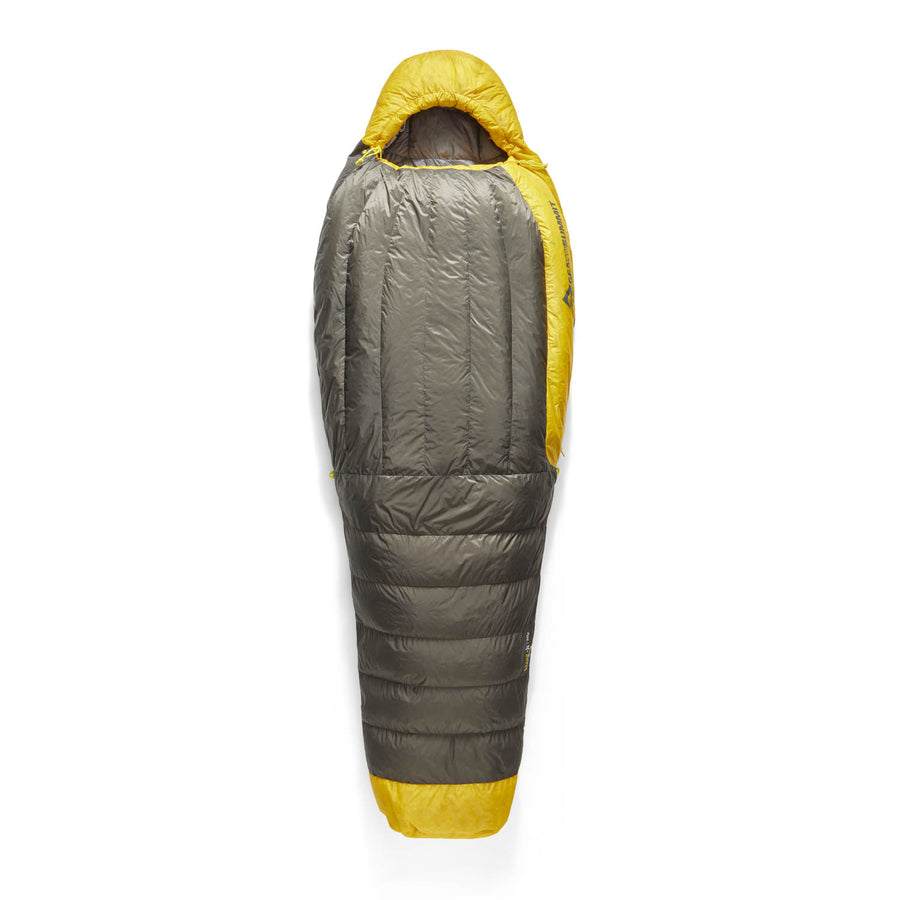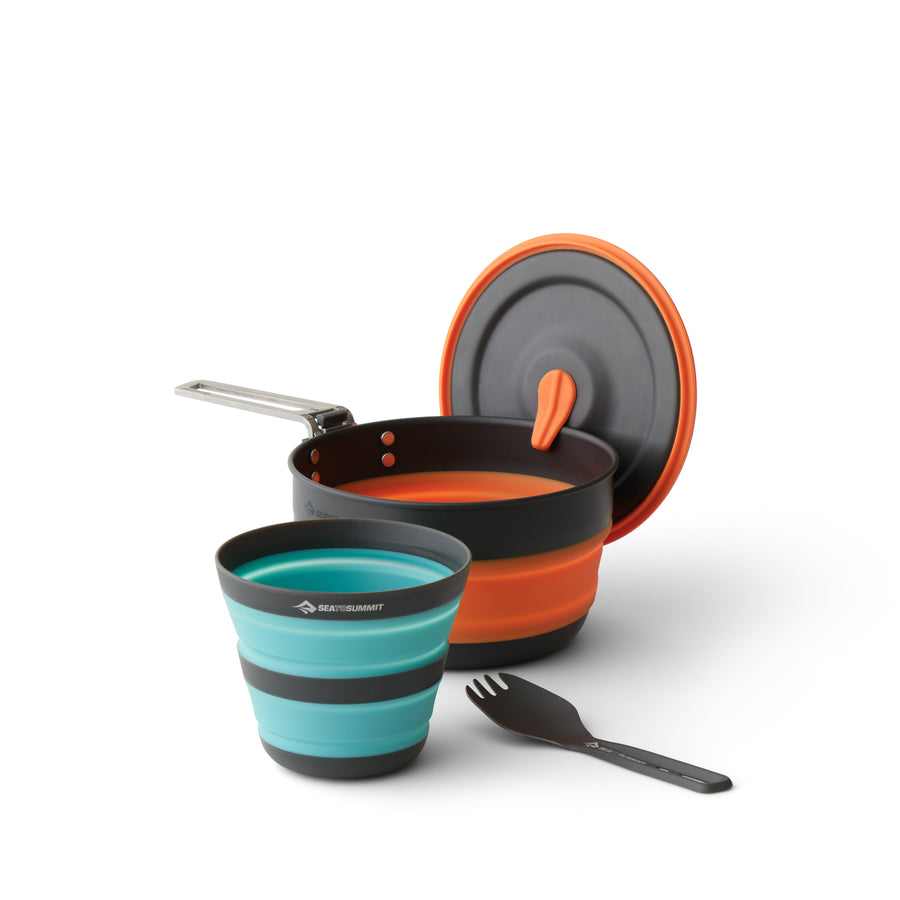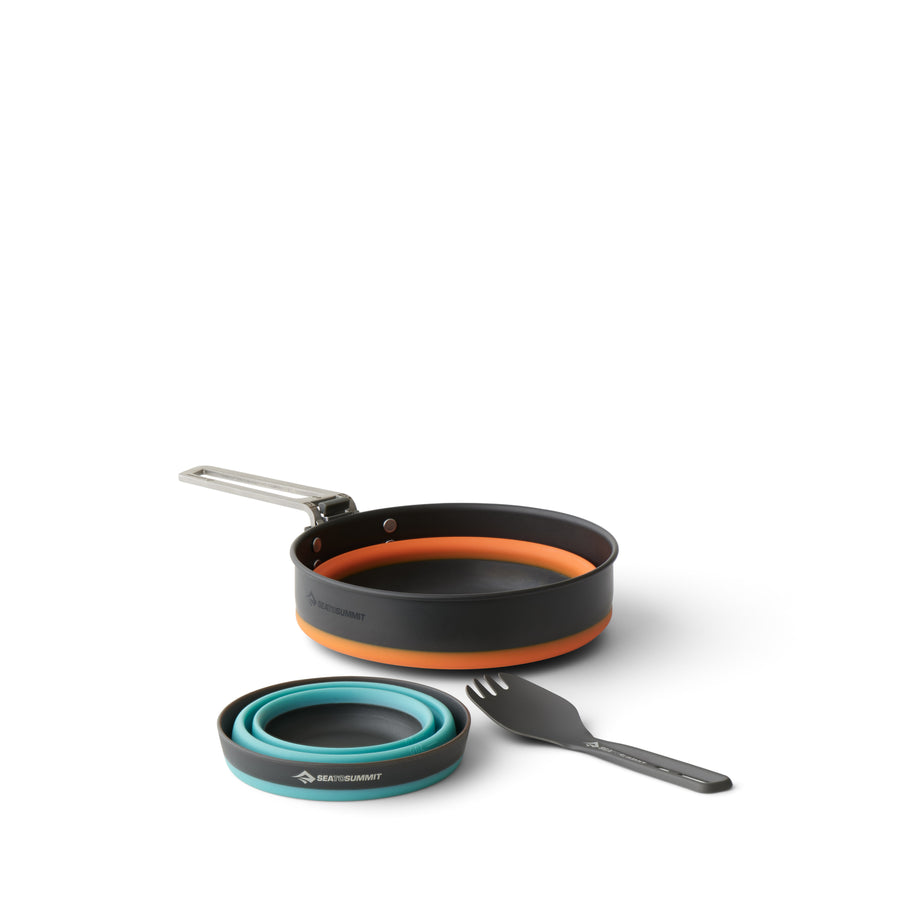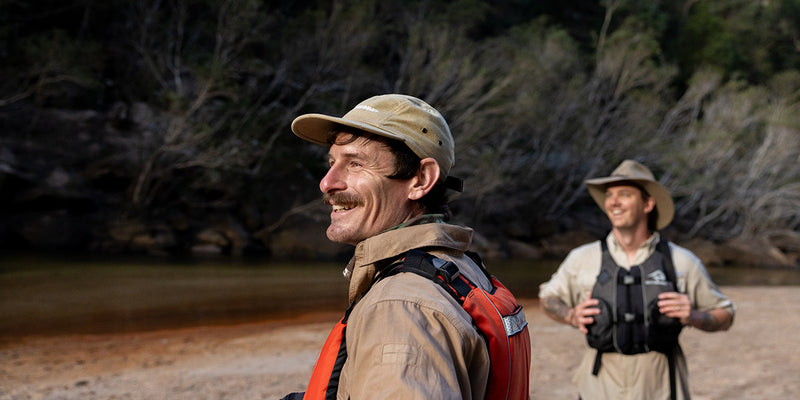Your Guide to Personal Hygiene When Camping and Hiking

Coming clean about the grimier side of life on the trail.
When we first enter the world of hiking and camping we need to re-think a lot of what we know about keeping clean and personal hygiene. Does a bear poop in the woods? Yes, and so do humans – but humans have to learn how to do it properly.
While it's no big deal to develop something of an aroma, it's another thing to end up with a nasty stomach bug in the middle of nowhere because of inadequate trail hygiene.
Here’s what you need to know:
Be Prepared to Leave No Trace
When you’re out in the wild, it’s easy to overlook what happens to your waste – but it can have a lasting impact on the natural environment.
As a hiker and all-round-nice-person, it's your responsibility to leave trails and campgrounds exactly as you found them by following the seven rules of Leave No Trace:
1) Plan ahead and prepare
2) Travel and camp on durable surfaces
3) Dispose of waste properly
4) Leave what you find
5) Minimize campfire impacts (be careful with fire)
6) Respect wildfire
7) Be considerate of traditional landowners and other visitors
By following the Leave No Trace philosophy, you're doing your part to protect the wilderness so future hikers can also soak up the same pristine beauty you got to enjoy.
How To Keep Clean and Leave No Trace
Point 3 above says ‘dispose of waste properly’. In towns and cities, we've got facilities like sewage treatment plants, recycle centers and trash collection services to manage these things. Out in the wilderness? Not so much.
That's why you need to educate yourself about proper disposal of human waste, the kinds of personal care products you bring with you into the wilderness, and how to use them.
Poop, Wee and TP
When you need to pee, find a spot at least 70 adult steps (200 feet) from any water source and let it flow.
Poop is more complicated. When nature calls, you’ll need to dig an 8 inch-deep hole (the same depth as an extended pocket trowel) at least 70 steps from your camp, the trail, and any waterways. The best site is somewhere sunny with loose soil because these conditions will make the waste decompose a lot faster. And – if the ground is hard or rocky, the Alloy Pocket Trowel will make short work of the compacted soil or roots.
More hardened folk can get by with leaves, but it’s OK to use toilet paper: Make sure you fill in all your toilet holes properly. Depending on where you are, it might be okay to bury or burn biodegradable toilet paper but the best practice is to carry it out with you in a tightly sealed bag.
Toilet paper should be stored in a waterproof bag or a specially made waterproof toilet roll holder like the Ultra-Sil Outhouse. The Ultra-Sil Outhouse can be hung on a tree branch near your freshly dug hole and its bright color signals for other campers to give you a wide berth.
Washing Hands
You’re more likely to pick up a stomach bug on a camping trip than you are when you’re at home. Don’t forget to wash your hands after using the toilet and before handling food.
When you’ve got good access to water, set up a small handwashing station with a Pack Tap or Watercell and the Trek & Travel Pocket Hand Wash soap leaves.
Beyond washing, carry a Trek & Travel Hand Cleaning Gel in your pack and make sure everyone in the group uses it after using the toilet. No exceptions.
Bathing
While you might have to forgo a few luxuries on a camping trip or hike, a shower doesn’t need to be one of them. If you’ve got access to a fair bit of water, you can take a refreshing shower with the Pocket Shower and scrub up with the Trek & Travel Liquid Body Wash or Trek & Travel Body Wash Soap Leaves.
Just like the handwashing soap, it’s fine to let this soap touch the ground—just don’t let it near any lakes or streams. That also means you shouldn’t take a bath in a lake with any soap.
If a camp shower isn’t on the cards or it’s too cold to strip off, opt for a ‘trail shower’ and just clean your body with biodegradable Wilderness Wipes.
Washing Your Hair
Greasy hair won’t kill you, but it can make you feel a little grimy. Bring along one of the pocket-sized Trek & Travel Liquid Conditioning Shampoos to use during your camp shower. If you’re trying to keep your base weight down, the Trek & Travel Conditioning Shampoo soap leaves are a lighter option.
Drying Off
When you’re moving from place to place, you don’t want a towel that takes forever and a day to dry. If you put a damp towel in your pack, it will make everything stink. If you’re packing for a backpacking trip, make sure you bring a quick-drying towel like the Pocket Towel or the almost weightless Airlite Towel. Absolutely worth the couple of ounces in your pack.
Brushing Your Teeth
Brush your teeth as you would at home but spit it out into your trash bag and pack it out with you. Of course, plenty of hikers choose to just spray the toothpaste out over as wide an area as possible. The goal is to make sure you don’t spit out a big blob of toothpaste.
Shaving Outdoors
Feel like you might be mistaken for a Yeti? Bring your razor and set yourself up with a little bucket of water and either the Trek & Travel Liquid Shaving Cream or easy-to-ration Trek & Travel Shaving Soap.
Planning for Periods
Before you head out into the wilderness, pick up a menstrual cup (and maybe some absorbent period underwear). You only need to empty the cup out twice a day and you can clean it with water. Empty it out into a cathole, clean the cup with soapy water and dump that water into the cathole too. As always, fill in your cathole before moving on.
If menstrual cups don’t work for you, remember to pack out any sanitary products you use.
Washing and Drying Your Clothes
If you’re only going on a trek for a few days, you probably won’t need to do any laundry. However, this can change if you’re on a backpacking trip for a week or more – you may not notice it, but any people standing downwind will.
To wash your clothes in the wilderness, use a dry bag, water and some Trek & Travel Liquid Laundry Wash. Wash your clothes in the sink or bag with the soap, empty the dirty water out and rinse with clean water.
When you’re done, wring them out thoroughly and hang them out to dry on our nifty 11-foot long, clothes pin-free Clothesline (it weighs just 25g and rolls up into the tiniest pouch imaginable). This one is high visibility—so you won’t literally clothesline yourself on your way to the toilet at night.
Don’t wash your clothes directly in streams or lakes. Even biodegradable soaps can affect the health of the organisms in the water.
Keeping Your Sleep System Clean
OK, this isn’t a personal hygiene or Leave No Trace tip. But - if you want your sleeping bag to last a long time and maintain its thermal performance, you need to keep it clean. A machine washable sleeping liner will go a long way to keeping dirt and grime out of your sleeping bag’s insulation.
You may not notice the buildup of dirt or sweat; but it negatively affects the insulation in your sleeping bag.
Washing Your Dishes
Keep your handwashing station separate from where you wash your dishes and keep the water used for each separate, too.
Pair the multipurpose Wilderness Wash with an Ultra-Sil Kitchen Sink or two for all your dish washing needs. For drying up, pack a microfiber towel like the Airlite Towel.
Trash Disposal
Carry out any waste that won’t break down in the soil with the durable Trash Dry Sack. This leakproof dry bag won’t spill in your pack or all over the campsite. Line it with a biodegradable plastic bag and attach it to the outside of your pack. Keep the bag sealed and away from your food supply to avoid cross-contamination and attracting wildlife.
What Not to Bring
Bulky toiletries and cleaning products.
When you’re packing for a hiking trip, you want to keep that backpack as light and space efficient as possible. Don’t bring big bottles of soap or toiletries. Look for high-concentration alternatives in small, pocket-sized bottles instead.
Deodorants
This might be a hard one to hear (or smell) but it’s best to leave the deodorant at home. The smell can attract animals to your camp who’ll do just about anything for a free lunch.
Non-Biodegradable Soaps
Soap with synthetic materials can wreak havoc on the biological balance of delicate wilderness ecosystems. It’s best to bring environmentally friendly alternatives, and make sure you dispose of soapy water 70 paces away from the closest water source.
Keeping Boots and Insoles Fresh
The above post mentions using a liner to keep a sleeping bag clean, and includes tips for washing clothes. When it comes to looking after gear, a really supportive and comfortable pair of shoes is less likely to get your attention. Airing out and – on a longer trip – cleaning and waterproofing your footwear will keep your shoes fresher and your feet healthier.
Whether you’re on your first or fiftieth hiking trip, we can all learn more about being more hygienic and responsible outdoors. Ask more experienced hikers – or your mates at the Ask Baz team – for tips on the best ways to stay healthy and minimize your impact on wilderness areas.










![Frontier Ultralight One Pot Cook Set - [3 Piece]](http://seatosummit.com.au/cdn/shop/files/FrontierULOnePotCookSet1P3Piece1.3LPotWithS-BowlandCup_ACK027031-122114_PRIMARY-1200x1200-9c6bd91.jpg?v=1749433473&width=900)
![Frontier Ultralight One Pot Cook Set - [3 Piece]](http://seatosummit.com.au/cdn/shop/files/FrontierULOnePotCookSet1P3Piece1.3LPotWithS-BowlandCup_ACK027031-122114_ADDITIONAL_1-1200x1200-9c6bd91.jpg?v=1749433473&width=900)
















